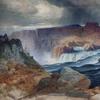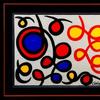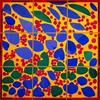Recently-Acquired Childe Hassam Watercolor Masterpiece Exhibited at Canton Museum of Art
- CANTON, Ohio
- /
- March 05, 2018

The Canton Museum of Art (CMA) now presents a special exhibition, American Masters: Watercolors from the CMA Permanent Collection, which features the Museum's most recent acquisition: an 1890 Impressionist masterpiece, "Bleak House, Broadstairs," by acclaimed pioneer of American Impressionism, Childe Hassam. Major watercolors by Winslow Homer, Edward Hopper, George Luks, John Marin, Maurice Prendergast, and John Singer Sargent are also featured in this special exhibition, which is on view through April 8, 2018.
Max Barton, Executive Director of Canton Museum of Art, said, "We are thrilled to add this important, classic work of American Impressionism to our collection. A work by Hassam has long been on our search list, and we acquired a fine piece with an elegant subject and beautiful orchestration of color. Clearly inspired by Hassam's exposure to the French style in the late 1800s, the painting is vibrant and crisp, and you feel as though you could step in and stroll the coastal waterway with the young lady."
Purchase [from a private collection] of "Bleak House, Broadstairs" was made through the Museum's Accession Fund, which is restricted solely for the purchase of art.
Together, the seven artists featured in the American Masters exhibition contribute importantly to our cultural heritage and the evolution of watercolor painting. Rarely are all seven of the masterworks by these artists displayed at one time at CMA. Watercolor is one of the most challenging mediums for artists to use; the colors need to be carefully controlled or they bleed into one another. In the century following the Civil War, watercolor painting became an important American medium, and it was used more freely than anywhere else in the world. American Masters showcases creative excellence in this uniquely American medium that continues to inspire and grow today.
Frederick Childe Hassam (1859-1935) was born in Dorchester, Massachusetts, the son of an old New England family. His father, Frederick Fitch Hassam, claimed descent from a 17th-century English immigrant, whose name, Horsham, had been corrupted over time to Hassam. Early in his career, Hassam was persuaded to drop his first name to exploit the exotic suggestion of his middle and family names. With his dark skin and heavily-lidded eyes, the artist was thought by many to be of Middle Eastern descent-and he happily went along with the misconception. In the mid-1880s, he took to painting an Islamic-looking crescent moon (later shortened to a slash) next to his signature, and he adopted the nickname Muley (from the Arabic Mawla, meaning Lord or Master) after MuleyAbul Hassan, a ruler of Granada in Washington Irving's "Tales of the Alhambra."
Raised in a cultivated household, Hassam decided early on to become an artist. He left high school to work for the Boston, Massachusetts publisher Little, Brown & Co. and also began training as a wood-engraver. He turned to illustration and received commissions to illustrate Celia Thaxter's "An Island Garden" in 1894.
Hassam made his first trip to Europe in 1883, but it was not until 1886 that he embarked on a three-year stint of art study in Paris. He was enrolled for a short time at the Académie Julian, known for its noisy, crowded studios and absence of discipline of any kind. There Hassam saw a wide range of styles, as the school attracted many foreign artists as well as young French ones. It was, however, the work of the Impressionists that really attracted Hassam. Although light had previously played a major role in Hassam's work, color remained subdued. His 1887 "Grand Prix Day" demonstrates that after only a short time in Paris, he obtained a heightened sense of color and it is almost an Impressionist street scene in both its composition and broken brushstroke.
Hassam was an anglophile who interpreted his own approach in terms of the British landscape tradition, but there is no question that he returned to the United States with the technique and sensibilities of the French Impressionists tempered with American realism. Impressionism came to Boston and flourished in the 1880s without the furious protest it had aroused in France. It is not surprising then that in 1898 Hassam joined with the former academic painter Julian Alden Weir and John Henry Twachtman in founding the Ten American Painters, which was to include Frank Weston Benson, Robert Reid and Edmund C. Tarbell, among others. This group of Impressionists mounted a series of exhibitions that were by far the most coherent of any held in America in that era.
Hassam created more than 2,000 oils, watercolors, pastels, and illustrations. With these works, he achieved critical acclaim through important American exhibitions. A series of street scenes, many vibrant and patriotic with bright banners, are considered the peak of his achievement.
















